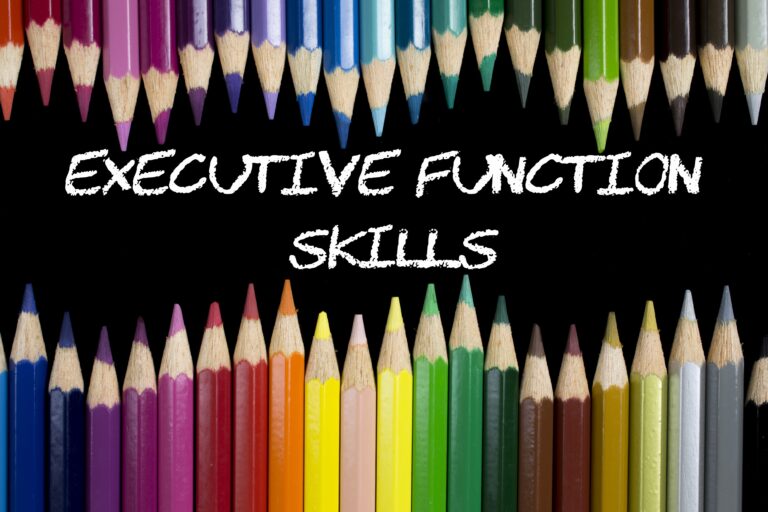Executive functions are self-regulating skills that we use every single day. Imagine a child sitting in the classroom during a typical school day. They must pay attention to something even if they find it boring, tune out any distractions, suppress their impulses that may get them into trouble, try to retain multiple pieces of information in their brain simultaneously, and switch between different rules.
These executive function skills, the ability to focus, ignore distractions, hold pieces of information, and adapt to changing circumstances, are essential for learning, behavior, and development in children. However, not all children thrive in these areas at the same time, and some may need additional support to improve their development in executive function. Here are a few practical strategies educators can employ in the classroom to help enhance executive function skills among students.
Teach about Executive Function
Teaching students about executive function can help them understand and recognize the impact of managing their emotions. When students know that these skills are like a muscle that needs to be exercised, it may help them understand how to prioritize these skills to enhance them. Encourage students to discuss their experiences of putting off a task or poor planning.
Stop during lessons to have students reflect on what may have distracted them during the lesson or how they can refocus to get back on task. These strategies may help students recognize why they struggle and learn what they can do next time to improve their performance.
Create a Structured Environment
A predictable classroom can help students with executive dysfunction because it provides a stable learning environment that students can rely on. Clear rules, routines, and schedules create a sense of safety for students who may feel overwhelmed by their surroundings. Visuals can serve as reminders of their schedule or rules helping students focus more on learning than what they must do next.
The way the classroom is organized can also have an impact on the way students learn. Designing the classroom to help minimize distractions can aid in smoother transitions and less anxiety. Overall, a structured environment provides a valuable framework where students can thrive.
Use a Checklist or a Planner
Students who struggle with executive function skills may need to get more organized. Using a checklist can help students break down tasks into smaller steps while a planner can help remind them when assignments are due. Checklists can make tasks feel less overwhelming and more achievable because they minimize the mental strain of having to make decisions.
Students with executive function issues often have poor memory, so planners help them remember. However, if you forget to write it down, then you won’t know, so this is where tech tool planners come in handy where teachers can post assignments to make it easier for students with executive dysfunction to remember when assignments are due.
Model Executive Function Skills
Modeling is an instructional strategy that can play a huge role in supporting and teaching executive function skills. Just serving as an example can have a big impact on your students. Something as simple as walking students through your thought process on how you planned your lesson, resolved a conflict, or managed your emotions can be helpful because you are giving students a concrete, real-life example of how to apply these life skills.
Additionally, you can also model how you face an unexpected classroom interruption, how to calmly solve a problem, or adjust to change even when you are feeling overwhelmed. By seeing these skills in action students are learning how to navigate their way through life more effectively.
Utilize Technology
Incorporating technology can help support executive function skills among students by offering them a way to manage their workload and organize their tasks. Students who have trouble with time management and organization can especially benefit because many tech tools can be tailored to various student needs. Students who struggle with deadlines or keeping track of assignments can benefit from reminder apps or digital calendars or utilize task management tools to help break down tasks into more manageable parts. By integrating these tech tools, students will be better able to manage their workload confidently.
Incorporate Physical Activity and Mindfulness
Students can improve their executive function skills by engaging in regular physical activity and mindfulness. One study found that children who engaged in aerobic fitness had greater white matter in their brain which was linked to enhanced executive function. Another study found that interventions that focused on mindfulness practices could improve executive functions like memory and impulse control, reducing anxiety and improving brain performance.
Personalize Interventions
Some students may not develop executive functions to the same extent as their classmates and may require more personalized intervention. School psychologists can identify the specific areas that need development and develop a tailored approach to support the student. Through counseling, instructional strategies, coping mechanisms, software programs, and targeted skill-building activities, students who require additional support will learn to develop the essential skills they need to succeed.
Supporting executive function in the classroom takes a lot of forethought and requires implementing practical strategies. However, by creating a learning environment that supports the development of these functions you are fostering a classroom where students will thrive well beyond just the classroom.




